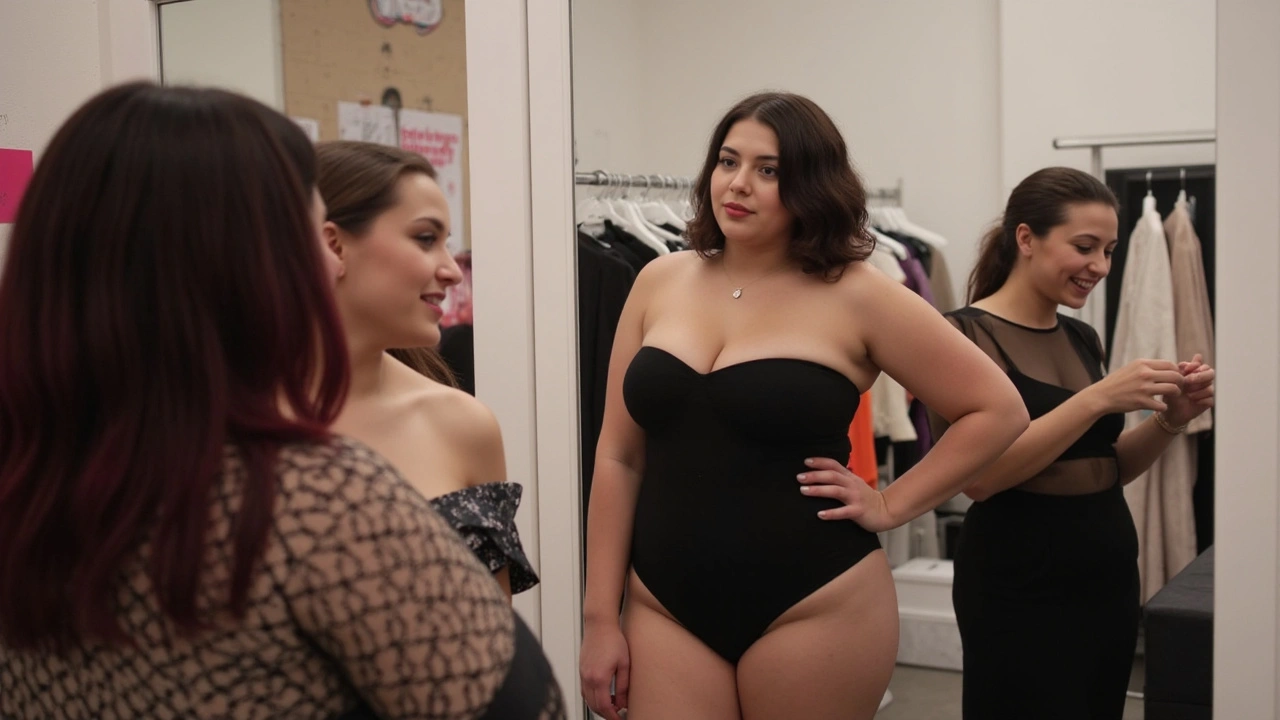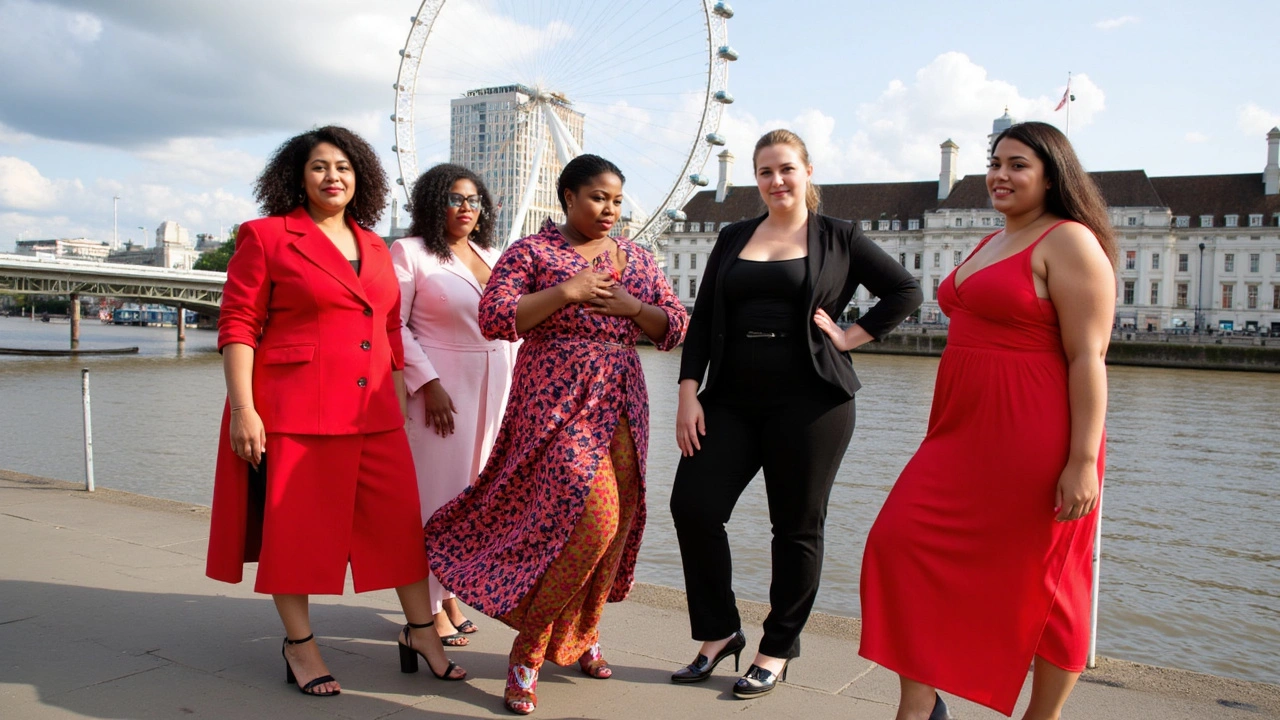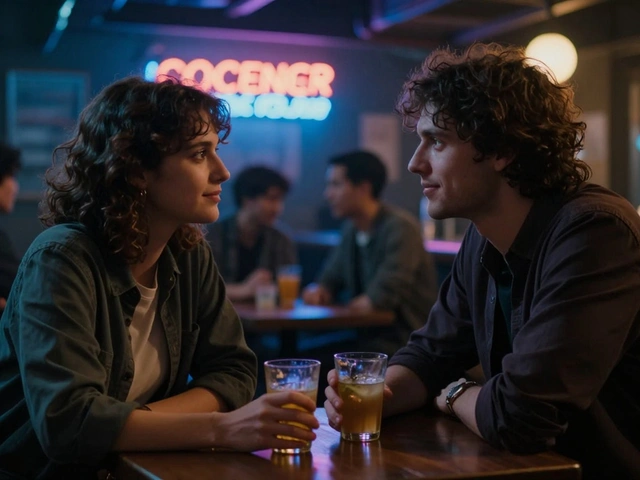If you flip through a typical fashion magazine from, let’s say, 2005, spotting a plus size model was about as rare as a unicorn in Manhattan. These days? Scroll your Instagram or peek at an ad campaign, and you’ll find curvy women taking over billboards and runways. But it wasn’t always like this—which makes you wonder, how did these brave folks claw their way to the top of an industry obsessed with tiny waists and airbrushed thighs? Not all stories are pretty, but they’re worth telling. A decade ago, even whispering about "plus size" in the modeling business felt like walking on thin ice. I remember asking a photographer friend why so many catalogs looked the same—with skinny, almost fragile bodies in every shot. He laughed and shrugged, “That’s just how it is.” Well, not anymore. Big changes are happening, and they’re loud, proud, and shaking up the status quo. Honestly, the whole idea that only a certain body fits the “model” mold is getting tossed out the window, faster than last season’s trends.
The Evolution of Plus Size Models: From Fringe to Fame
If we rewind to the ‘80s or ‘90s, mainstream fashion editors wouldn’t have given a plus size model the time of day. Sure, the first spark goes back farther: Emme, considered the world’s first plus size supermodel, hit big in the mid-1990s, becoming the face—and, let’s be real, the hope—of curvy models everywhere. But for years, most plus size work was shunted off to catalogs or niche retailers. They were hidden in the back, like the leafy greens behind the cookies at the supermarket. And yet, here we are in 2025, and the script has completely flipped. Did you catch Ashley Graham’s major Vogue cover in 2017? It wasn’t just a solo victory. It was a shot fired across the bow of stale beauty standards.
About halfway through the last decade, the industry caught on—consumers were sick of the same old, same old. Social media exploded, and with it, a demand for real, relatable faces. Models like Tess Holliday, Paloma Elsesser, and Precious Lee became household names, not just for their curves but for their activism and personality. The facts speak volumes: according to the Fashion Spot’s 2023 Diversity Report, 22% of runway shows at the major Fashion Weeks featured plus size models. Compare that to a measly 4% just seven years earlier. Sure, it isn’t yet a 50/50 split, but the shift is as clear as a sunny day.
And while fashion magazines were once almost allergic to fuller figures, now you see entire issues dedicated to body positivity. Even ad agencies, which used to play it safe, are on board—big names like Savage X Fenty and Aerie led the way, showing that sexy doesn’t have a size. Modeling agencies have also changed their tune: Wilhelmina, IMG, and Ford now have specialized plus divisions, with contracts for women sizes 12 and up. If we toss in a little personal opinion here, the climb isn’t just about fashion but a larger cultural reckoning with size, health, and the wild idea that happiness doesn’t shrink or expand based on your jeans tag.
Requirements, Realities, and Runway Routines
Here’s where things get a touch tricky—what actually counts as plus size in modeling? The bar is lower (or higher, depending on your view) than you’d think. While most U.S. stores use “plus” to mean size 14 and up, modeling agencies start considering women “plus size” at as low as a size 10. You could be a healthy, active size 12 and get labeled curvy in Paris but considered straight size in Los Angeles. It’s enough to make your head spin. If you’re eyeing the industry, size charts, sample racks, and even regional standards matter more than you might imagine. Agencies do look at hip and bust measurements: typically, hips from 40-48 inches, with a proportionate body shape and good skin.
But there’s more to it than just numbers. Confidence? Essential. You could have "the look," but if you wither in front of a camera, forget it. Agencies want personality—someone who’s magnetic in a room. And let’s talk about casting calls. They’re a strange beast. Sometimes they feel like a cross between a job interview and the first day of high school. If you’ve ever trekked across a city for an audition just to be asked how you maintain your confidence or what you eat for breakfast, well, welcome to the club!
Plus size models face plenty of myths. A big one: they’re “unhealthy.” That’s nonsense. There are marathon runners, yoga instructors, and professional dancers all working as plus size models. Health doesn’t come in a single shape, and the best agencies know it. But roadblocks still pop up. Some designers won’t stock bigger samples, meaning even the top curvy model might be squeezed into an ill-fitting dress. More than once I’ve heard stories of models turning DIY tailors in backstage bathrooms, armed with safety pins and prayers.
For the day-to-day grind, plus size models keep routines much like anyone else: workouts to keep energy high, balanced eating, constant self-care. Skin routines are sacred, sleep is gold, and mental health takes priority, especially in an industry still finding its footing on the body positivity tightrope. But here’s the kicker: whether you’re five foot ten or have a little more to love, resilience is the must-have accessory. When rejections feel personal (and they do), bouncing back becomes a skill, not just a trait.

Behind the Scenes: Industry Trends and Game-Changers
Beneath the dazzling covers and glossy ads, the fashion world is ruthless—always hunting for the next big thing. Yet, what’s fascinating is how plus size models are not just the trend, but are shaping the trends. Brands like Savage X Fenty and Good American are built on the backs (and curves) of real women, using authentic voices to connect with shoppers. It’s a little wild to recall: just ten years ago, ad executives swore certain markets ‘weren’t ready’ for fuller figure campaigns. Fast forward, and studies show brands that feature diverse body types see up to a 30% increase in sales engagement. Money talks, and the message is loud and clear.
Let’s talk social media—it’s the secret sauce (or fuel, depending on your view) for the whole movement. Instagram changed everything. Aspiring models post their own candids, skipping the old gatekeepers. Ashley Graham’s “Beauty Beyond Size” movement took off in 2015 and now hashtags like #EffYourBeautyStandards, Tess Holliday’s creation, reach millions globally. It’s a feedback loop: fans want realness, models open up, and brands who resist get dragged for outdated thinking. Even runway shows are catching up. The 2024 New York Fashion Week had the most inclusive cast in its history, with models sized from zero to 28.
Of course, not all trends are golden. There's still a gap in international markets. Asia, for example, trails behind, with most big agencies only recently adding plus size divisions. And, mind you, “plus” can mean different things—Japan’s trend is towards petite curves, while Brazil embraces bombshell silhouettes. In Europe, especially Paris and Milan, there’s progress, but let’s be honest, the old ways die hard. It’s a long road, but every step is a step away from the cookie-cutter model image that used to rule the industry. Sometimes it’s two steps forward, one step back.
One digression—random but worth sharing. I once sat in on a casting call where two of the models had never modeled before. They came together, best friends from Dallas, and ended up both getting booked; they said their goal was simply to see themselves represented. They cried, hugged, and the entire room felt lighter. Cheesy? Maybe, but if you think inclusion is just a buzzword, spend a day in that room. It changes you.
Tips for Aspiring Plus Size Models and Getting Started
If you’re reading all this thinking, “Could I step into those heels?”—here are a few honest, straightforward tips. First, forget the myths: you don’t need to be a certain height (though most agencies prefer 5’8” and up for runway), but you do need presence. Start local. Plenty of smaller agencies and boutique brands do open calls; look for those and skip anyone asking for big upfront fees. Most reputable agencies make money once they start booking you, not before. A simple, natural portfolio goes further than any over-the-top “glam” shoot. Show your personality! Agencies hire people, not mannequins.
Social media’s your best friend—post authentic photos, share your story, interact with modeling communities, and use popular hashtags; but don’t underestimate the value of networking in person. Attend fashion events, reach out to photographers, and stay in touch with folks you meet at castings. It’s a small world, after all. Rejection is normal, even for the greats, so treat every "no" as practice for the "yes" that could change everything.
Also, be ready for all sorts of oddball questions at castings—everything from your favorite way to relax to what you’d cook for dinner. Agencies want to see your individuality and confidence under pressure. Keep a healthy routine, not just for your body, but for your mind—self-doubt creeps in fast if you let it. And if you ever sense red flags, trust your gut; the industry has its fair share of scams. Above all, know your worth. You don’t owe anyone the right to criticize your body—or your dreams.
If you like data (and hey, who doesn’t?), check this out:
| Year | Runway Shows with Plus Size Models (%) | # Major Plus Size Model Campaigns |
|---|---|---|
| 2015 | 5 | 10 |
| 2018 | 12 | 22 |
| 2021 | 18 | 40 |
| 2023 | 22 | 63 |
See that bump? The trend isn’t going away. I won’t pretend every door opens, but the walls are coming down. The best advice? Show up bravely, bring your quirks, and remember—beauty isn’t just a size, it’s a signal to the world that you belong in your own skin. Someone out there needs to see you do exactly that.



